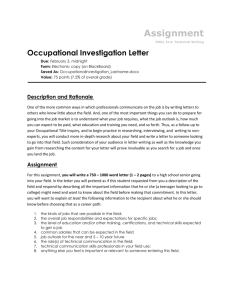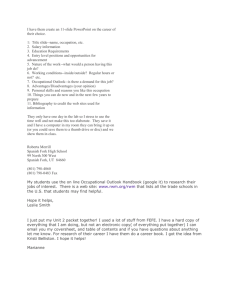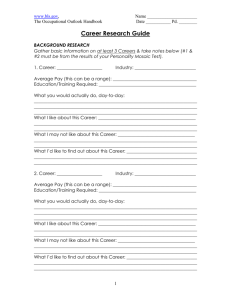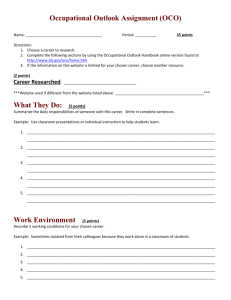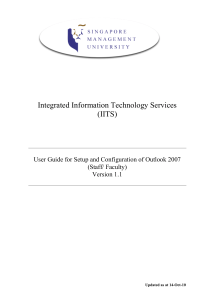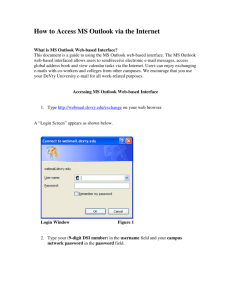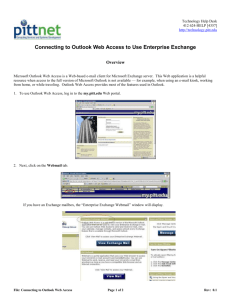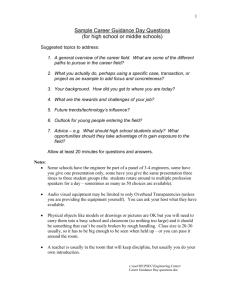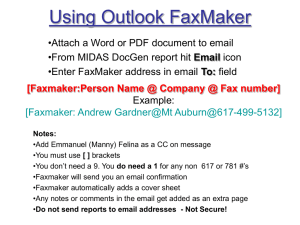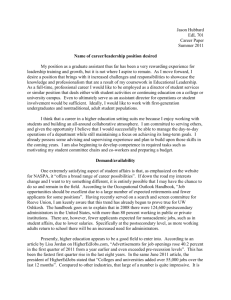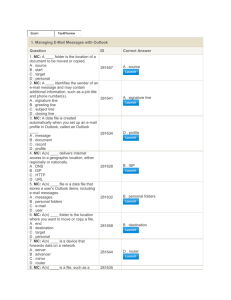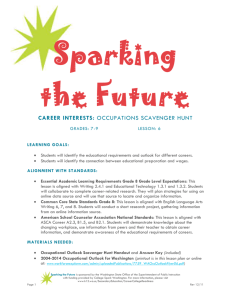Career Ready Lesson 2 Grades 11
advertisement
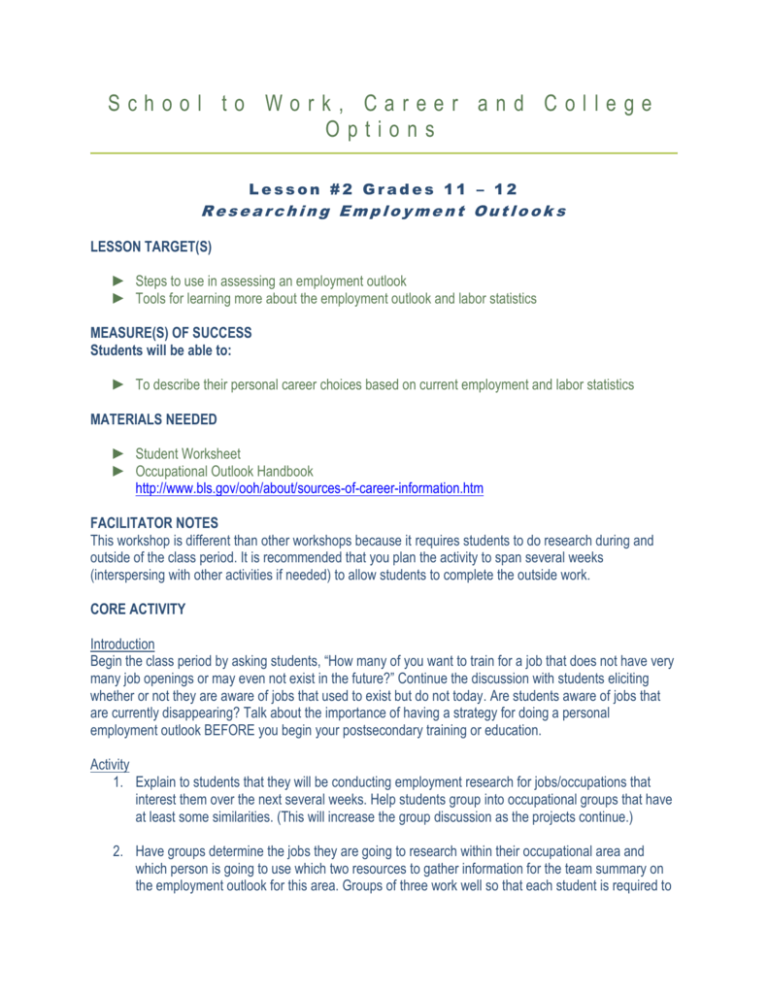
School to Work, Career and College Options Lesson #2 Grades 11 – 12 Researching Employment Outlook s LESSON TARGET(S) ► Steps to use in assessing an employment outlook ► Tools for learning more about the employment outlook and labor statistics MEASURE(S) OF SUCCESS Students will be able to: ► To describe their personal career choices based on current employment and labor statistics MATERIALS NEEDED ► Student Worksheet ► Occupational Outlook Handbook http://www.bls.gov/ooh/about/sources-of-career-information.htm FACILITATOR NOTES This workshop is different than other workshops because it requires students to do research during and outside of the class period. It is recommended that you plan the activity to span several weeks (interspersing with other activities if needed) to allow students to complete the outside work. CORE ACTIVITY Introduction Begin the class period by asking students, “How many of you want to train for a job that does not have very many job openings or may even not exist in the future?” Continue the discussion with students eliciting whether or not they are aware of jobs that used to exist but do not today. Are students aware of jobs that are currently disappearing? Talk about the importance of having a strategy for doing a personal employment outlook BEFORE you begin your postsecondary training or education. Activity 1. Explain to students that they will be conducting employment research for jobs/occupations that interest them over the next several weeks. Help students group into occupational groups that have at least some similarities. (This will increase the group discussion as the projects continue.) 2. Have groups determine the jobs they are going to research within their occupational area and which person is going to use which two resources to gather information for the team summary on the employment outlook for this area. Groups of three work well so that each student is required to use at least two of the resources. Students can duplicate areas if they believe that they can gain additional information i.e. interviewing two different people. 3. Give students time in class to research and compile information. Make sure that the teams understand they are going to present their summary report to the entire class. Set a specific time frame for the research and the presentations. 4. Group Presentations: Have each group present their summary report. Have the whole class analyze the data and whether or not it seems advantageous to continue to look for jobs in this occupational area 5. Reiterate with the students that there are multiple variables that go into determining an employment outlook. Remind them that having a systematic way to research and analyze the employment information is critical. Closing Require each student to write a short response to the question: Is the occupational area(s) I’m considering for my first career step likely to have jobs? Why or why not? Is this still an area of interest for me? Why or why not? Student Worksheet: Employment Outlook Team Summary Specific Jobs Occupational Group Education/Training Required for Entry Level Positions Individual Research Research Step People You Know Interview People in the Field Information in High School Guidance Office Internet Search of Employers Internet search of Professional societies, trade groups, and labor unions. WorkSource Office or similar vocational areas U.S. Department of Labor One Career Stop http://www.careeronestop.org/ Other Outlook Information Entry Level Earnings or Salary Employment Outlook Individual Student Response: Is the occupational area(s) I’m considering for my first career step likely to have jobs? Why or why not? Is this still an area of interest for me? Why or why not?
